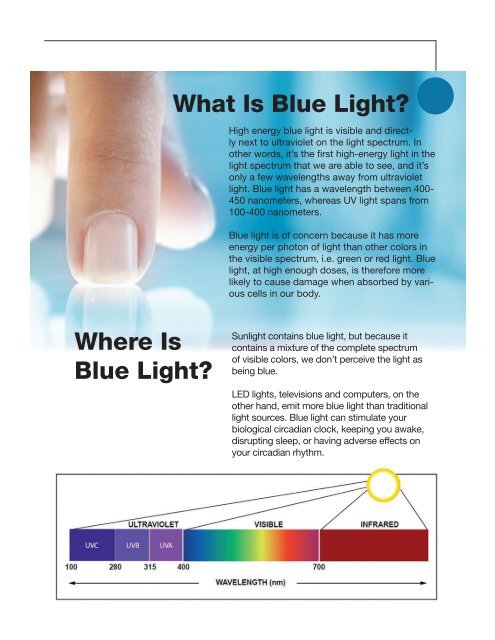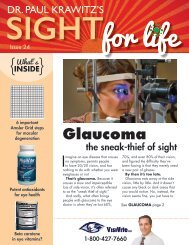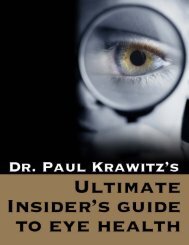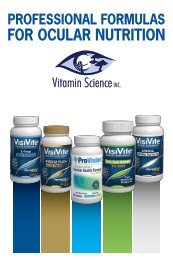Protect your Eyes from Blue Light
High energy blue light is everywhere - cell phones, TV’s, LED lights and sunlight itself. Too much exposure to blue light can lead to digital eyestrain and damage to retinal cells. VisiVite Blue Light Basher uniquely replenishes the macular pigment layer and adds additional ingredients that absorb and dissipate high energy blue light in nature.
High energy blue light is everywhere - cell phones, TV’s, LED lights and sunlight itself. Too much exposure to blue light can lead to digital eyestrain and damage to retinal cells. VisiVite Blue Light Basher uniquely replenishes the macular pigment layer and adds additional ingredients that absorb and dissipate high energy blue light in nature.
You also want an ePaper? Increase the reach of your titles
YUMPU automatically turns print PDFs into web optimized ePapers that Google loves.
What Is <strong>Blue</strong> <strong>Light</strong>?<br />
High energy blue light is visible and directly<br />
next to ultraviolet on the light spectrum. In<br />
other words, it’s the first high-energy light in the<br />
light spectrum that we are able to see, and it’s<br />
only a few wavelengths away <strong>from</strong> ultraviolet<br />
light. <strong>Blue</strong> light has a wavelength between 400-<br />
450 nanometers, whereas UV light spans <strong>from</strong><br />
100-400 nanometers.<br />
<strong>Blue</strong> light is of concern because it has more<br />
energy per photon of light than other colors in<br />
the visible spectrum, i.e. green or red light. <strong>Blue</strong><br />
light, at high enough doses, is therefore more<br />
likely to cause damage when absorbed by various<br />
cells in our body.<br />
Where Is<br />
<strong>Blue</strong> <strong>Light</strong>?<br />
Sunlight contains blue light, but because it<br />
contains a mixture of the complete spectrum<br />
of visible colors, we don’t perceive the light as<br />
being blue.<br />
LED lights, televisions and computers, on the<br />
other hand, emit more blue light than traditional<br />
light sources. <strong>Blue</strong> light can stimulate <strong>your</strong><br />
biological circadian clock, keeping you awake,<br />
disrupting sleep, or having adverse effects on<br />
<strong>your</strong> circadian rhythm.









